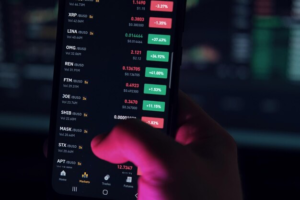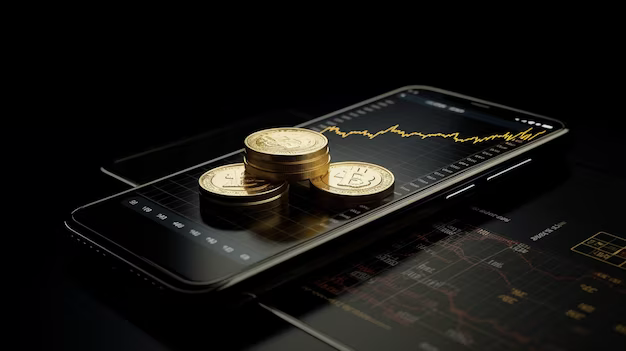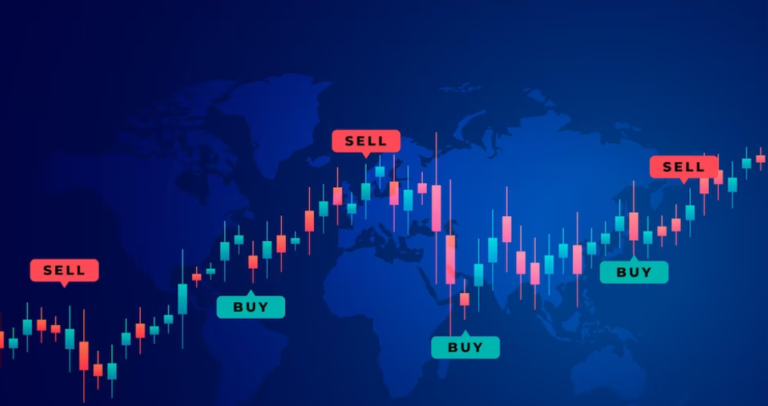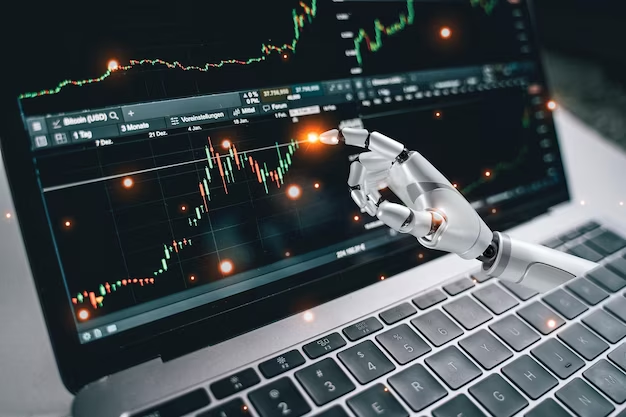Stop-hunting, a controversial yet common practice in financial markets, disrupts traders’ strategies, causes losses and raises concerns about market integrity. This article examines the mechanics of stop-hunting, revealing the motives, tactics and effects behind this manoeuvre. Our aim is to reveal the strategies used by the market whale and provide traders with the insights they need to identify, avoid and manage this complex environment.
Unmasking Stop Hunting: Insights into Market Whales’ Tactics
A major challenge for traders is stop hunting, the deliberate triggering of stop losses. Manipulated by market whales, this practice disrupts the natural flow of markets, leading to abrupt price fluctuations and exploitation of retail traders. We examine the tactics of these behemoths and give traders the knowledge to protect their positions.
Stop Hunting Unveiled

Enter stop hunting – a calculated move orchestrated by the heavyweights of the market. It’s all about steering prices intentionally toward zones packed with those safety-net stop-loss orders. These orders, strategically placed to shield traders from big hits, gather up at certain price levels dubbed liquidity pools. This manipulation sets off a domino effect of liquidations, causing a big surge in buying or selling force and flipping prices in the blink of an eye;
- Stop-loss orders are used by traders to limit their potential losses by automatically selling an asset if its price reaches a certain predetermined level. When these levels are hit, they can trigger a cascade of selling, leading to a temporary drop in price. Some traders may attempt to manipulate the market by intentionally triggering these stop-loss orders to cause price movements that benefit their positions;
- This practice is controversial and can be considered unethical or even illegal if it involves market manipulation. Regulators and exchanges often have rules in place to prevent such activities. Traders and investors need to be aware of the possibility of stop hunting and take measures to protect their positions, such as using stop-limit orders or being cautious in highly volatile markets.
Understanding market dynamics, having a solid trading strategy, and staying informed about regulations are crucial for navigating these situations.
Understanding the Nexus: Stop Hunting and Stop-Loss Orders
Stop-loss orders, essential risk management tools, inadvertently contribute to market volatility when triggered. Concentrated at certain price levels, these orders, when activated en masse, create opportunities for market manipulators to exploit the ensuing price swings. Stop hunts predominantly occur where these stop-loss orders congregate, turning these liquidity pools into prime targets for manipulation.
The When and Why of Stop-Hunting
Stop-hunting, while possible under any market condition, thrives in specific scenarios. High-impact news releases, thin or highly leveraged markets, and significant technical or psychological price levels become fertile grounds for this practice. The triggering of leveraged positions’ stop losses in low-volume markets often leads to cascading liquidations, amplifying price movements and benefiting market manipulators.
Stop-hunting typically occurs in financial markets when large players, such as institutional investors or big traders, aim to manipulate prices to their advantage. This practice involves intentionally triggering stop-loss orders placed by other market participants. Here’s a breakdown of when and why stop-hunting might take place:
When:
- Volatile Market Conditions: Stop-hunting often happens during periods of high volatility when price movements are rapid and unpredictable. This volatility can make it easier for large players to push prices in a specific direction, triggering stop-loss orders;
- Key Technical Levels: Traders commonly place stop-loss orders at crucial technical levels like support or resistance levels, or at round numbers. These are predictable points for triggering stop orders;
- Illiquid Periods: In thin or illiquid markets, it may take fewer trades to move prices significantly. This can be advantageous for stop-hunting as it doesn’t require as much capital to influence prices.
Why:
- Profit Motive: Stop-hunting is often done to profit from triggering these stop-loss orders. By causing a cascade of selling (or buying), the market manipulator can enter into positions at more favorable price;
- Reducing Competition: By triggering stop-loss orders, large players might eliminate competition from other traders, giving them a better position in the market;
- Psychological Advantage: Creating price movements to trigger stop-loss orders can lead to psychological effects on other traders, inducing panic or fear. This can lead to further market movements in the direction favored by the manipulator.
It’s important to note that while stop-hunting can occur, it’s a controversial and potentially illegal practice, particularly if it involves market manipulation or collusion. Regulators and exchanges have rules in place to prevent such activities, and they often monitor market behavior to detect and deter manipulative practices.
Traders should be aware of the possibility of stop-hunting and use risk management strategies, like placing stop-limit orders instead of traditional stop-loss orders or diversifying their portfolios, to mitigate potential risks associated with this practice.
Unveiling the Culprits: Who Hunts Stop-Losses in Crypto?
In the crypto market, stop-hunting is orchestrated by various entities, primarily financial institutions, whales, and occasionally, certain exchanges. Armed with substantial capital, these players exploit liquidity pools to manipulate prices, driving them towards stop-loss levels for personal gain.
Whales, wielding immense influence in the market, often instigate these manipulations, while some exchanges have faced accusations of engaging in similar practices.
In the crypto markets, stop-loss hunting can be conducted by various entities, including:
- Large Traders/Whales: Individuals or entities holding significant amounts of cryptocurrency can manipulate prices by executing large trades to trigger stop-loss orders;
- Market Makers: Entities responsible for providing liquidity in the market might engage in stop-loss hunting to profit from triggering these orders and then benefiting from the subsequent price movements;
- Exchanges or High-Frequency Traders: Some exchanges or high-frequency trading firms might have access to market data and technological infrastructure that allow them to spot clusters of stop-loss orders and potentially take advantage of them;
- Manipulative Groups or Cartels: Groups of traders, sometimes operating in collusion, might attempt to manipulate prices by deliberately triggering stop-loss orders for their benefit;
- Speculative Investors: Even individual traders, when well-informed about market dynamics and technical levels, might attempt stop-loss hunting strategies, although this is less common.
It’s important to note that while stop-loss hunting can occur in the crypto markets, it’s a controversial and potentially illegal practice, especially if it involves market manipulation or collusion. Regulators have been increasingly vigilant about such activities, and exchanges often have surveillance mechanisms in place to detect and prevent manipulative behaviors.
Traders in the crypto space should be aware of the possibility of stop-loss hunting and employ risk management strategies to protect their positions, such as setting stop-limit orders, diversifying their portfolios, and staying informed about market dynamics.
Exploring Whales’ Motives Behind Stop Hunting
Whales engage in stop hunting to facilitate their trading strategies and accumulate or offload positions at advantageous prices. By triggering significant price movements, they induce fear or greed among traders, capitalizing on resulting errors in judgment. These manipulations also create false breakout signals, attracting more liquidity for the whales to execute their orders conveniently.
Whales in the crypto market, referring to entities or individuals holding substantial amounts of cryptocurrency, might engage in stop-loss hunting for various reasons:
- Accumulation at Lower Prices: Whales might trigger stop-loss orders to create temporary price drops, allowing them to accumulate more cryptocurrency at lower prices. By inducing panic selling, they can buy assets at a discount before prices potentially rebound;
- Leveraging Market Psychology: Manipulating prices to trigger stop-loss orders can influence market sentiment. This manipulation can create fear, uncertainty, and doubt (FUD) among retail traders, allowing whales to profit from the resulting price swings;
- Profit Generation: Whales might profit from triggering stop-loss orders by capitalizing on the subsequent price movements. They can enter short positions to benefit from price drops or take long positions at discounted prices after triggering stop losses;
- Liquidity and Volatility: Creating sudden price movements through stop-loss hunting can generate increased trading activity and liquidity, which whales might exploit to execute their trades at more favorable prices;
- Market Dominance: Large players may aim to maintain or strengthen their market dominance by manipulating prices. Stop-loss hunting can help them maintain control or influence the market in their favor.
While these motives might drive whales to engage in stop-loss hunting, it’s important to note that such practices can be controversial and potentially illegal if they involve market manipulation or insider trading. Regulators are increasingly monitoring crypto markets, and exchanges implement measures to prevent such behaviors.
Traders should be vigilant and consider risk management strategies like setting stop-limit orders, diversifying their portfolios, and staying informed about market dynamics to mitigate the impact of potential stop-loss hunting activities.
Detecting the Stop-Hunting Scenario
Identifying stop hunts necessitates keen observation of market dynamics. Sudden spikes in volume, repeated stop runs in consolidating markets, high spread, slippage, and increased volatility are telltale signs of potential stop-hunting. Illustrative examples and comprehensive analysis help traders anticipate and mitigate the risks associated with these events.
Detecting stop-hunting scenarios in financial markets can be challenging, as it often involves intentional manipulation by larger players. However, here are some indicators or signs that traders might look for:
- Unusual Price Movements: Abrupt and sharp price movements that don’t seem to align with market fundamentals or news could indicate potential manipulation;
- Volume Spikes: Large trades or sudden spikes in trading volume, especially around key technical levels, might suggest attempts to trigger stop-loss orders;
- Repeated Testing of Support/Resistance: If the price repeatedly tests a support or resistance level without breaking it, it might signal an attempt to trigger stops placed at those levels;
- Quick Reversals: After triggering a cluster of stop-loss orders, there might be a rapid reversal in price movement. This reversal can be an indication of stop-hunting;
- Unusual Behavior in Options Market: Unusual activities in options markets, such as significant changes in open interest or unusual options trades, might be related to strategies involving stop-hunting;
- Pattern of Behavior: Monitoring patterns or behaviors of certain market participants known for aggressive trading tactics might reveal their intentions to trigger stops.
While these signs might hint at potential stop-hunting, it’s crucial to conduct thorough analysis and not jump to conclusions based solely on these indicators. Market movements can have various reasons beyond intentional manipulation.
Traders can also use different tools and technologies, such as trading algorithms or specialized software, to track market movements and identify abnormal patterns that might suggest manipulation. However, detecting stop-hunting remains challenging, as it often involves sophisticated strategies employed by experienced market participants.
Protecting Against Stop-Hunting: Tips for Traders
Mitigating the risks of stop-hunting involves employing diverse strategies. Diversifying across multiple exchanges, setting conservative stop-loss placements, actively monitoring market movements, and advancing technical analysis skills provide traders with a fortified defense against manipulative practices.
While stop-loss orders are vital for risk management, they can be vulnerabilities exploited by skillful market manipulators. Fear not, intrepid trader! Here are some tips to shield yourself from the jaws of stop-hunting:
Placement is Key:
- Avoid Round Numbers: Steer clear of placing stop-loss orders at round numbers like $10 or $100. These are common targets for hunters as they’re easily identifiable and clustered;
- Technical Analysis: Use support and resistance levels, trendlines, and Fibonacci retracements to find logical stop-loss placements. Look for less obvious price points within these zones to avoid clustering;
- Hidden Stops: Consider trailing stop-loss orders that move dynamically with the market, making them harder to pinpoint.
Think Like a Hunter:
- Consider Whale Behavior: Be aware of the timing and tactics whales often employ. Fake breakouts or sudden liquidity shifts are potential red flags;
- Multiple Timeframes: Analyze charts on different timeframes (daily, hourly, etc.) to get a broader picture of market sentiment and potential stop-loss concentrations;
- Volume Matters: Watch for unusual surges in volume, especially near your stop-loss levels. This might indicate manipulation aimed at triggering orders.
Strengthen Your Defenses:
- Diversification is Key: Don’t put all your eggs in one basket. Spread your capital across different assets and sectors to minimize exposure to targeted manipulation;
- Position Sizing: Maintain proper position sizing based on your risk tolerance. A smaller position means a smaller stop-loss order, making it less enticing for hunters;
- Patience is Virtue: Don’t be tempted to chase quick profits or overreact to market fluctuations. Stick to your trading plan and avoid emotional decisions that could expose you to hunting tactics.
Bonus Tip: Consider using stop-loss hunting detection tools. These analyze order book data and market behavior to alert you of potential manipulation attempts.
Remember, complete avoidance of stop-hunting is impossible. However, by employing these tips and staying vigilant, you can significantly reduce your vulnerability and make informed trading decisions in the face of potential manipulation.
The Dark Art of Hunting Stop-Loss Orders: A Step-by-Step Insight
Disclaimer: Stop-loss hunting is a controversial practice that can be considered unethical and manipulative. This article is for informational purposes only and should not be interpreted as condoning or encouraging such activities.
A detailed walkthrough highlights how market whales execute stop-hunts, using an illustrative scenario involving a popular cryptocurrency. Analyzing market conditions, pinpointing liquidity pools, triggering liquidation cascades, and profiting from resulting price movements constitute the intricate process behind stop-hunting.
Copy trading platforms inadvertently accumulate stop-loss orders at specific price levels, making them susceptible to stop-hunting. Finestel, an industry-leading asset management solution provider, has revolutionized copy trading technology to shield users from these manipulative practices. By internally storing users’ stop-loss order information and executing market orders only upon triggering, Finestel ensures users are shielded from market manipulations.
Stop-loss orders are crucial risk management tools for traders, but they can also be vulnerabilities exploited by experienced market participants. Hunting stop-loss orders, a practice shrouded in secrecy, involves manipulating the market to trigger these orders for profit. Let’s delve into the murky world of stop-loss hunting, taking a step-by-step look at how it might unfold:
1. Target Selection:
- Highly Liquid Assets: Whales, the large players orchestrating this, target liquid assets with ample trading volume. This ensures their actions have sufficient impact and they can exit their positions swiftly;
- Trending Markets: Trending markets, either bullish or bearish, offer better opportunities for stop-loss hunting due to the predictability of participant behavior.
2. Identifying Stop-Loss Clusters:
- Technical Analysis: Whales analyze price charts, order book data, and market sentiment to identify areas where stop-loss orders are likely clustered. These areas could be near support/resistance levels, moving averages, or psychological price points;
- Software Tools: Sophisticated algorithmic tools can scan the market for stop-loss order concentrations, providing whales with valuable insights.
3. Initiating the Hunt:
- Fake Breakouts: Whales might execute large buy or sell orders, briefly pushing the price beyond a support/resistance level or key moving average. This triggers stop-loss orders set just beyond those levels, creating a cascade of selling or buying, respectively;
- Liquidity Dumps/Injections: Whales can inject or remove large amounts of liquidity from the market, creating temporary price drops or spikes. This again ensnares stop-loss orders placed near those temporary extremes.
4. Exiting the Trap:
- Once stop-loss orders are triggered, the market typically retraces back to its original level. Whales capitalize on this by quickly reversing their initial position, profiting from the triggered orders and the subsequent market movement.
5. Obfuscating Tracks:
- Whales often spread their orders across multiple exchanges to avoid detection. They might also employ complex trading algorithms to disguise their intentions and make their actions appear like organic market movements.
Remember:
- Stop-loss hunting is a complex and risky practice, often involving large amounts of capital and sophisticated tools;
- Regulatory bodies actively monitor markets for manipulative behavior, and stop-loss hunting can attract scrutiny and legal repercussions;
- As a trader, using stop-loss orders strategically, diversifying your portfolio, and maintaining proper risk management practices can help mitigate the risk of falling victim to such tactics.
Peeking behind the curtain of stop-loss hunting reveals a dynamic world in constant flux. It’s a perpetual tug-of-war between the whales and individual traders, with tactics morphing by the day. Grasping these maneuvers arms you with knowledge, turning you into a savvy and alert player in the market’s digital dance.
Stop-hunting stirs up quite a storm in the trading world, tossing risks into the portfolios of traders. This deep dive into the tactics of market whales uncovers their playbook, equipping traders with the intel to spot, fend off, and sail through these orchestrated moves. But hey, even with these shields up, keeping up-to-date with market know-how and staying watchful is the code to shield your capital from the negative vibes of stop-hunting.
Stay safe, keep learning, and good luck in your trading endeavors!
FAQ
Liquidity hunting, commonly known as stop hunting, involves deliberately triggering a pool of stop orders, causing high volatility, volume spikes, and increased spread and slippage.
A stop run occurs when prices breach a significant level, triggering a cascade of stop-loss orders placed near that level, swiftly reversing the movement.
Signs of potential stop hunting include abnormal price movements, heightened volatility and volume, increased spread, and slippage.
While not typically illegal, stop-hunting is widely perceived as unethical due to its manipulative nature and unfair advantage over retail traders.
Entities like whales, financial institutions, and certain exchanges are the main perpetrators of stop-hunting, manipulating markets for personal gain. Understanding the intricacies of stop-hunting empowers traders to fortify their defenses against market manipulations. While market whales may persist in their strategies, informed traders armed with knowledge and vigilance stand resilient against the disruptive impacts of stop-hunting.











